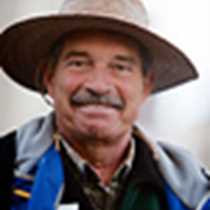Split and Hvar, Croatia
When the Greek came to this area in 385 BC, they chose the site well. It had a protected area, water, and good soil. This is the reason that the largest industrial city of Croatia is situated here today. Our day began with a visit to the old Roman city of Salona which was partly excavated last century. Yet a great amount of work remains to be done. We returned to Split, where we visited the well-conserved remains of the Emperor Diocletian's vast Roman palace, one of the largest and best conserved of the Roman world. Diocletian was probably a native of Salona, became emperor in 284 and set out to reorganize the immense Roman Empire. After ruling for 20 years, he retired from public life and lived in the palace at Split designed by the architects Filotas and Zoticos. Today it is being restored carefully. It is, in reality, a huge fort. Today it is part of UNESCO's World Heritage Site series.
From Split, we returned to the ship for lunch and repositioned to the island of Hvar. During our city tour, we visited the 15th century Franciscan Monastery of the Church of our Lady of Charity, with a great collection of artwork and other treasures. We also visited Europe's oldest active theatre, and ended our day with a bus ride up to one of the highest points to the citadel above the town for a stunning afternoon view of the whole bay, and especially of the tower of the church of St. Mark (photo), built by the Venetians, who ruled from 1278 to 1797.
When the Greek came to this area in 385 BC, they chose the site well. It had a protected area, water, and good soil. This is the reason that the largest industrial city of Croatia is situated here today. Our day began with a visit to the old Roman city of Salona which was partly excavated last century. Yet a great amount of work remains to be done. We returned to Split, where we visited the well-conserved remains of the Emperor Diocletian's vast Roman palace, one of the largest and best conserved of the Roman world. Diocletian was probably a native of Salona, became emperor in 284 and set out to reorganize the immense Roman Empire. After ruling for 20 years, he retired from public life and lived in the palace at Split designed by the architects Filotas and Zoticos. Today it is being restored carefully. It is, in reality, a huge fort. Today it is part of UNESCO's World Heritage Site series.
From Split, we returned to the ship for lunch and repositioned to the island of Hvar. During our city tour, we visited the 15th century Franciscan Monastery of the Church of our Lady of Charity, with a great collection of artwork and other treasures. We also visited Europe's oldest active theatre, and ended our day with a bus ride up to one of the highest points to the citadel above the town for a stunning afternoon view of the whole bay, and especially of the tower of the church of St. Mark (photo), built by the Venetians, who ruled from 1278 to 1797.




